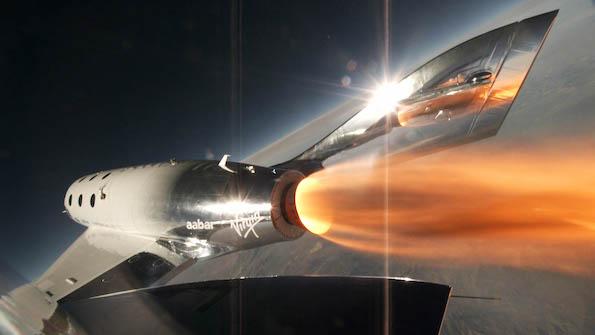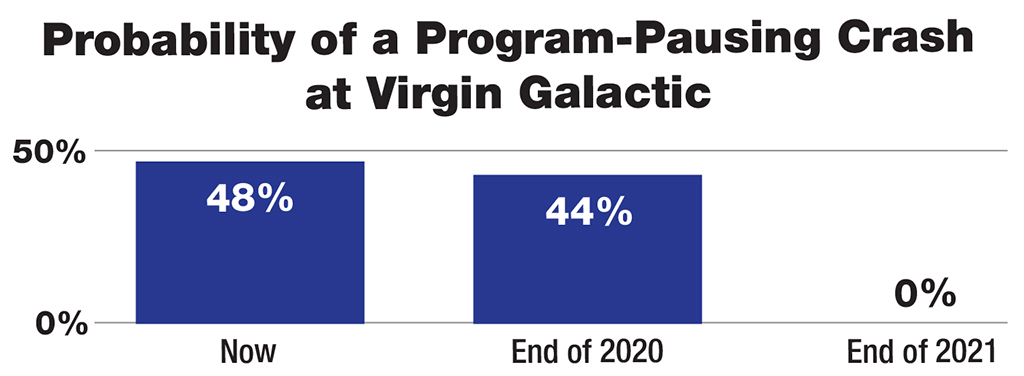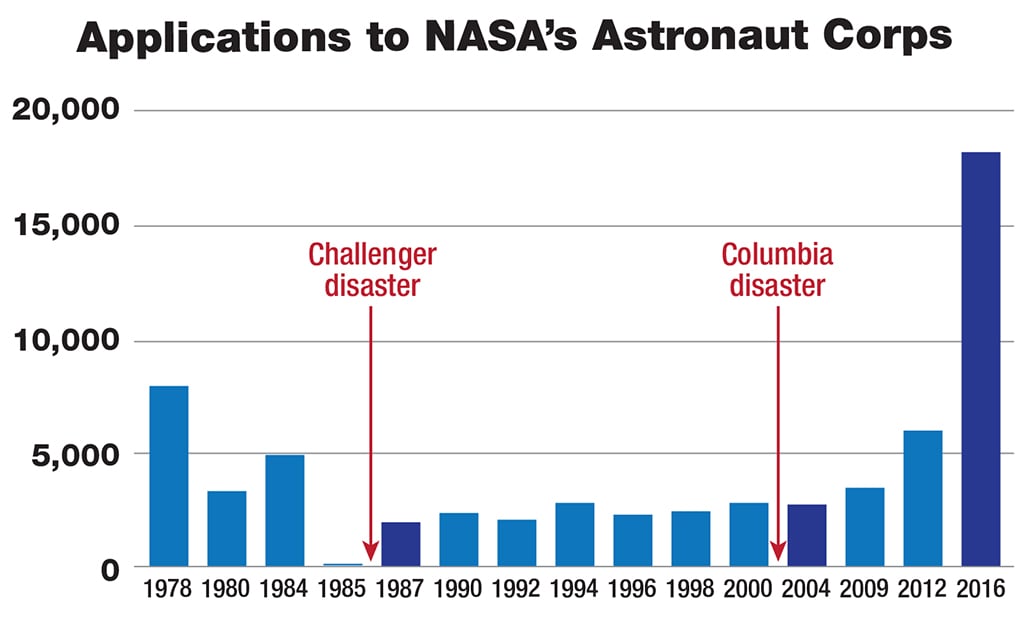
Next year is likely to herald the dawn of routine space tourism, with Virgin Galactic anticipating its first commercial launch in 2020. One goal of billionaire-backed upstarts such as Virgin, Blue Origin and others is to make orbital experiences as common for paying passengers as flying on an airliner.
- Publicly traded Virgin Galactic’s operational debut sparks accident analyses
- Past is prologue and there might be more customer demand than fear
But as the Dec. 20 timer glitch that kept Boeing’s Starliner spacecraft from reaching its intended rendezvous with the International Space Station proves, even an unmanned space mission that goes wrong can generate big headlines these days. So, what happens to a business that provides space tourism if a tragic, fatal mishap occurs, especially in the beginning of operations? Investors want to know and, to a degree, publicly traded and regulated companies such as Virgin Galactic need to have a response ready, because it is a key business risk.

Virgin Galactic has responded, saying balancing risk with shareholder reward is part of the business and investors and customers are being made aware of all the risks (AW&ST Nov. 11-24, 2019, p. 47). Of course, Virgin Galactic’s supplier Scaled Composites already had a fatal crash in 2014 when one pilot died. But that was in a testing phase, and investors want to know about business prospects now as Virgin Galactic prepares for launching commercial service. In turn, financial analysts are weighing in.
Opinions are divergent, with practically all analysts acknowledging that a bad accident with a death toll has the potential to shut down Virgin Galactic. “A major accident could slow or close the business, or cause demand to decline significantly,” Credit Suisse analyst Rob Spingarn and his team said in November. “A catastrophic accident could leave the company valueless, in our view.”
But not everyone agrees that outcome is likely. Vertical Research Partners analyst Darryl Genovesi, in his own November report, goes into detail about how a fatal mishap may not necessarily ground space tourism. Genovesi’s team looks back on the NASA space shuttle and NASA-Defense Department X-15 programs for guidance, as well as niche extreme-adventure marketplaces such as mountain climbing, which serve the same level of wealthy clientele that space tourism companies seek initially.
The Genovesi team believes the 1960s-era X-15 program, featuring the world’s first spaceplane, is the best comparison to Virgin Galactic’s approach.
The X-15 was carried to an altitude of around 45,000 ft. by a mother ship, a modified Boeing B-52, and then airdropped before firing its rocket engine and accelerating to apogee in space, reentering, and gliding home to make a horizontal landing. Virgin Galactic’s SpaceShipTwo (SS2) mission profile is “very similar” to the X-15’s, according to the Vertical analysts.
SS2s will be lofted to around 45,000 ft. by twin-fuselage mother ships called WhiteKnightTwo, according to Virgin Galactic. The SS2 is then airdropped and a rocket hybrid propulsion system called RocketMotorTwo kicks in to project the SS2 into a space trajectory.

In its time, three X-15s were built, completing 199 flights between 1959 and 1968, of which 13 flew higher than 50 mi., the altitude required for NASA to recognize them as spaceflights and award astronaut wings to the pilots. The X-15 experienced one total loss in 1967, near the end of its program, when aircraft No. 3 broke apart during reentry, killing the pilot. The accident was attributed to a combination of pilot error and degraded flight control authority following an electrical disturbance earlier in the flight. There was also a landing accident in 1962, although that aircraft, No. 2, was subsequently repaired and the injured pilot survived.
“If we assume that the probability of a fatal crash is [about] 0.5% per commercial flight, which is what X-15 actually realized during the late 1950s and early 1960s flying the same mission (one fatal crash over 199 flights), then the probability of Virgin Galactic crashing once over its next 131 commercial flights over the next two years, is [about] 48%,” the Vertical team says.
By the end of 2020, the company will have completed 16 of the 131 flights. Keeping with a 0.5% per flight likelihood, the probability of Virgin Galactic crashing during 2021 would then drop to around 44%. “We don’t estimate a probability of it crashing in a subsequent flight (beyond 131), but we do assume a crash out there doesn’t result in a program pause or meaningful loss of revenue subsequently,” they say.
Another way to look at the potential effect of a fatal crash on a space tourism business is whether customer demand would evaporate. Here, Genovesi dives through space shuttle history for indications. That fleet made 135 spaceflights, including four flights during developmental testing in 1981-82 and then 131 operational flights from 1982-2011. Five fully functioning orbiter vehicles were built, two of which were destroyed, one during launch and one during reentry, killing the entire seven-person crew in each instance. The fatal mishaps represent about 1.5% of total missions flown.
The Space Transportation System used a significantly different configuration to get into orbit, including dual solid rocket boosters and a shuttle, all strapped to an even larger external fuel tank. The orbiters were built to take a 60,000-lb. payload up to 110 nm or a 35,000-lb. payload to 220 nm. By contrast, SS2s are designed to take six passengers up 50 nm without accelerating to orbital speeds to launch payloads.
“The shuttle program didn’t end after its two catastrophes—and neither did the X-15 program after its fatal crash, and neither did the Virgin Galactic program after its fatal crash,” says Genovesi’s report. Instead, after the Challenger disaster, NASA built another shuttle.
That was possible due to widespread public support for the space program. In fact, applications to become a NASA astronaut rose after both fatal accidents (see chart above).
Analysts believe public support is even more pervasive now. They cite a 2019 Pew Research study that found 58% of Americans polled think human astronauts are essential, while half think human space travel will become routine in the next half-century. More than 40% indicated interest in traveling to space themselves. Regarding private space exploration companies, about 77% of respondents indicated a fair amount or great confidence that they could build safe and reliable spacecraft.
Finally, the analysts point to extreme mountain climbers, a niche group of usually highly ambitious and wealthy individuals. They note that around 5% of the roughly 2,000 people who attempt to climb mountains at least 8,000 m (26,000 ft.) tall die every year trying.
“Said differently, [about] 5% of the die-hards do literally die,” Genovesi wrote. “Everyone who tries knows what he’s getting into and chooses to devote significant time and resources to the adventure anyway. Virgin Galactic is counting on a similar commitment from its customers wherein there is some meaningful risk of [a] fatal accident, even if they can’t exactly quantify it.”

Comments
If we look back historically, a first accident is usually explained away as pilot, maintenance, procedure error and can be fixed. The second error is typically seen as an indication that there's something fundamentally wrong with the approach being taken (cough-B737 MAX-cough). I just finished reading the book to "Chasing the Moon" and was interested in seeing the concern regarding a second fatal Apollo accident (which was one of the primary reasons why Jame Webb retired when he did, so he wouldn't have overseen a second fatal Apollo accident). When the shuttle was being retired, without a replacement for launching men into space, one of the reasons cited was that there had been two accidents and if the shuttle kept flying there would be a third.
I think after a first accident people will tend to shrug it off - especially after a review board explains what happened and why they have confidence it won't happen again. There may be a short term dip, but if there is a viable, sustainable business model for sub-orbital flight (which I'm skeptical of) then the business will be fine over time.
X-15 and Space Shuttle were both government owned vehicles.
I'm sure any passengers of these commercial space ventures will have to sign liability release forms, but would those stand in a fatal accident case? Consider helicopter taxi type services, how robust is the market following the New York Airways, Pan Am building accident.
Please don't misunderstand my comments as anti-space tourism. I'm all for it, and will take a ride myself when it's affordable to me.
From the article examples, X-15 and Space Shuttle were both government owned vehicles. Vehicle based liability would have fallen back on the federal government.
Consider helicopter taxi type services, how robust is the market following the New York Airways, Pan Am building accident.
Please don't misunderstand my comments as anti-space tourism. I'm all for it, and will take a ride myself when it's affordable to me.
From the article examples, X-15 and Space Shuttle were both government owned vehicles. Vehicle based liability would have fallen back on the federal government.
Consider helicopter taxi type services, how robust is the market following the New York Airways, Pan Am building accident?
Please don't misunderstand my comments as anti-space tourism. I'm all for it, and will take a ride myself when it's affordable to me.
The first selectee and first participant, was Ms. Christa McAuliffe. She had taken a teaching position as a social studies teacher at Concord High School in New Hampshire in 1983.
The national Council of Chief State School Officers, a non-profit organization of public officials in education, was chosen by NASA to coordinate the selection process. Out of the initial applicant pool (of more than 10,000), 114 semi-finalists were nominated by state, territorial, and agency review panels. Ms. McAuliffe was one of two teachers nominated by the state of New Hampshire. The semi-finalists gathered in Washington, DC, from June 22–27, 1985, for a conference on space education and to meet with the Review Panel that would select the 10 finalists.
On July 1, 1985, McAuliffe was announced as one of the 10 finalists, and on July 7 she traveled to Johnson Space Center for a week of thorough medical examinations and briefings about space flight. The finalists were interviewed by an evaluation committee composed of senior NASA officials. On July 19, 1985, Vice President George H. W. Bush announced that she had been selected for the position. Another teacher, Barbara Morgan, served as her backup.
A little known fact regarding this sequence of events is that when Ms. McAuliffe became one of the finalists; and later accepted the offer of appointment formally; all of her general liability insurance coverages (from her employer, her home mortgage, etc.) were all cancelled, by her insurance carriers (with proper notice of course). The risk she was undertaking by joining both the training for; and, the program itself (leading to a possible flight) were unknown risks; and were specifically not covered as insurable risks, under the normal general liability coverages of employment or homeowners’ insurance policies.
I don’t know what these joyriding billionaires expect. But their estates’ Executors can expect that if they are not self-insured, the Executors won’t be collecting on (on behalf of the beneficiaries) the probably quite considerable pay-outs from their life-insurance policies. And those cancellations will be before “launch” day.